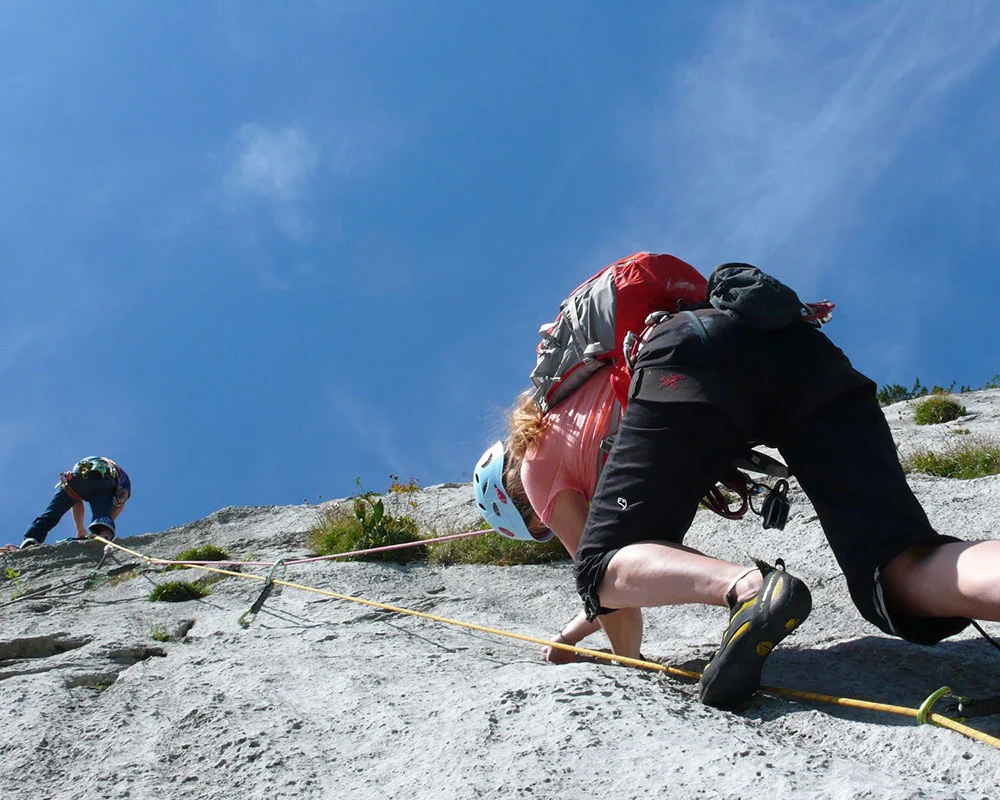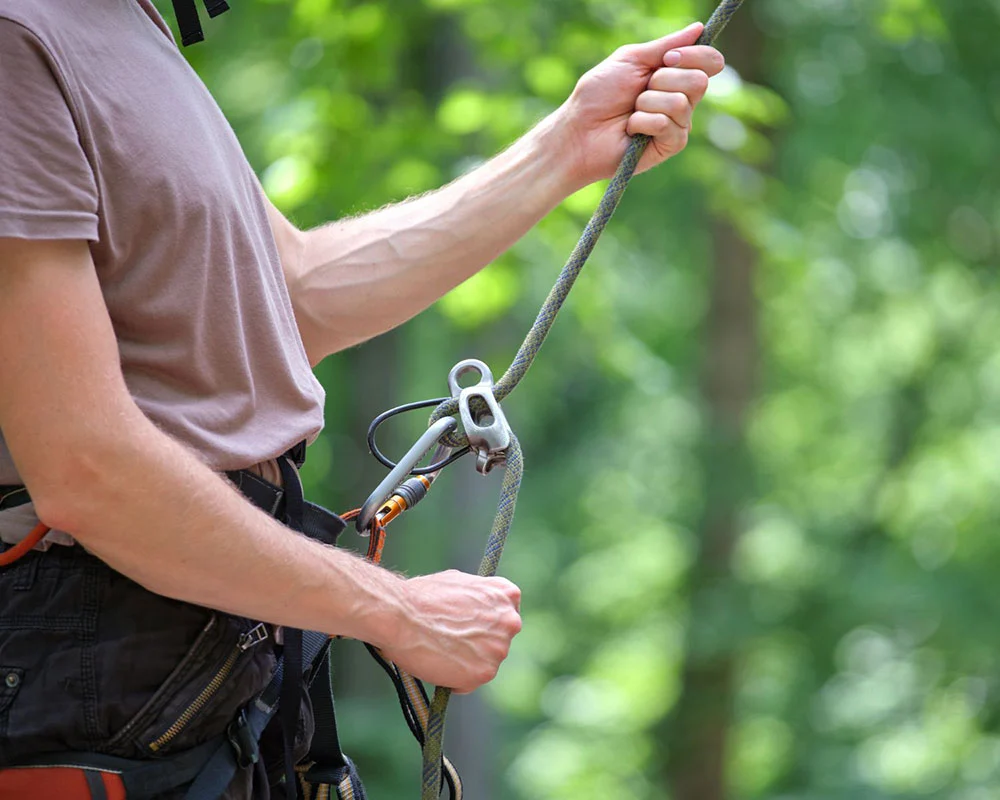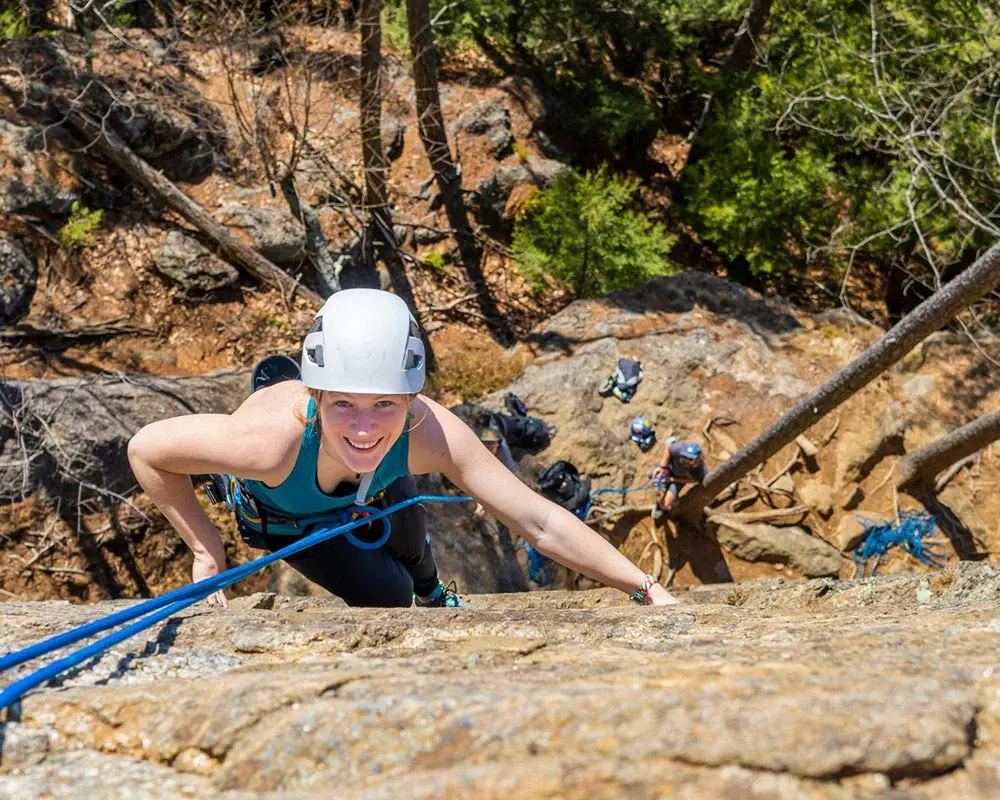Can you use your trusty bike helmet, or can bike helmets be used for rock climbing?
No. Climbing experts recommend against it. With 60% to 80% of climbing accidents related to head injuries, do you really want to risk it?
This article explains why you shouldn’t use your biking helmet for rock climbing.
Invest in safety, protect yourself at all times.
Key Takeaways
- Bike helmets lack the necessary design, construction, and impact protection capabilities of climbing helmets.
- Climbing helmets are specifically designed to withstand impacts from falling rocks and provide extensive coverage for superior head protection during climbing activities.
- Using a bike helmet for rock climbing poses potential risks and limitations that can compromise safety, including incompatibility with climbing equipment and failure to meet safety standards.
Differences Between Bike Helmets and Climbing Helmets
Bike helmets and climbing helmets have distinct differences in design, construction, and impact protection capabilities. Let’s take a deeper look.
Design and Construction
Here’s the table that summarizes the key differences between bike helmets and climbing helmets:
| Aspect | Bike Helmets | Climbing Helmets |
|---|---|---|
| Design | Rear projections and aerodynamic shape | Round design with no sharp edges |
| Shaped for single-impact protection | Extensive coverage | |
| Absorb shock from direct collisions | Protects front, back, and sides | |
| during high-speed biking falls | against falling rocks | |
| Construction | Built for absorbing ground impact | Various varieties: foam, hard shell, |
| during biking falls | hybrid | |
| Durability | N/A (not emphasized) | Emphasize durability when purchasing |
| climbing helmet (brands like Petzl) |
Impact Protection

Bike helmets and climbing helmets principally differ in their approaches toward impact protection.
Bike helmets have an aerodynamic design that is engineered to shield your head from the sides. This is an ideal safety measure during potential biking accidents. They’re also constructed to endure high-impact falls which you could experience on cycling trails.
On the other hand, climbing helmets are designed to handle falling objects that are a constant threat while rock climbing. They also cover your entire head, including the back and sides, providing superior protection against unexpected rockfall or nasty head bashes on cliff walls.
Ventilation
Ventilation plays a crucial role in both bike and climbing helmets.
Bike helmets and climbing helmets have numerous vents to keep your head cool during intense cycling sessions and climbing.
These vents are strategically planned to capture as much air as possible without compromising the helmets’ structural ability to protect your head from injury due to collision or falling rocks.
These vents also help dissipate heat, reduce the temperature around your head, lessen total headgear weight, and make it more comfortable to wear.
Can Bike Helmets Be Used for Rock Climbing?
Bike helmets and climbing helmets have different designs and construction. They also protect you in different ways.
Potential Risks and Limitations
Using a bike helmet for rock climbing poses potential risks and limitations that can compromise your safety on the wall. While a bike helmet offers some coverage for your head, it may not provide the protection you need when climbing.
Climbing helmets are specifically designed to withstand impacts from falling rocks, with foam padding and a hard shell construction that is capable of absorbing and distributing the force of an impact. They also feature vents to keep you cool during hard climbs.
Using a bike helmet may not meet the necessary safety standards required for climbing activities, putting you at a higher risk of head injuries.
It’s important to prioritize your safety by wearing the right equipment that is specifically designed for climbing.
Climbing helmets undergo a rigorous certification process that was perfected through decades of research and testing. This ensures its effectiveness in protecting your head when you climb.
Safety Standards and Recommendations

Climbing helmets are specifically designed to meet safety standards and provide maximum protection during rock climbing activities. The two main safety standards for climbing helmets are the EN 12492:2000 and UIAA 106.
These certifications ensure that climbing helmets are able to withstand the impact forces associated with falling rocks or a high-impact fall. It is important to note that bike helmets do not meet these specific safety standards and are not recommended for use in rock climbing.
While wearing a bike helmet may offer some level of head protection, it does not provide the same level of impact resistance as a climbing helmet, leaving you at risk of serious head injuries.
Is Head Protection Required in Climbing?
Rock climbers are exposed to various hazards that can result in severe or catastrophic head injuries. Falling rocks, gear accidentally dropped from above, or even falling to the ground can lead to serious head trauma.
While wearing a helmet during climbing isn’t required, it is highly recommended.
Climbers who choose not to wear climbing helmets place themselves at unnecessary risk.
Benefits of Climbing Helmets
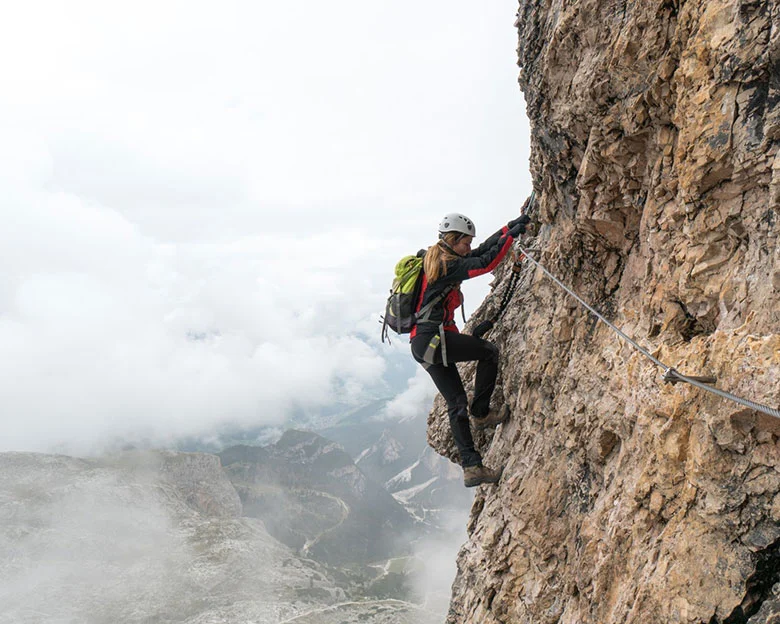
Climbing helmets provide several key benefits for rock climbers.
First and foremost, they offer superior protection compared to bike helmets. Climbing helmets are specifically designed to withstand the forces encountered in climbing environments, with a hard outer shell and shock-absorbing foam liner.
They can effectively protect your head from falling objects, such as rocks or gear, which are common hazards during rock climbing.
Climbing helmets also have a low-friction cap between the liner and helmet, allowing the shell to deflect around your head and absorb impact without transferring it directly to your head.
By wearing a climbing helmet, you can greatly reduce the risk of serious head injuries while enjoying this exhilarating sport.
Safety First. Get A Proper Climbing Helmet.
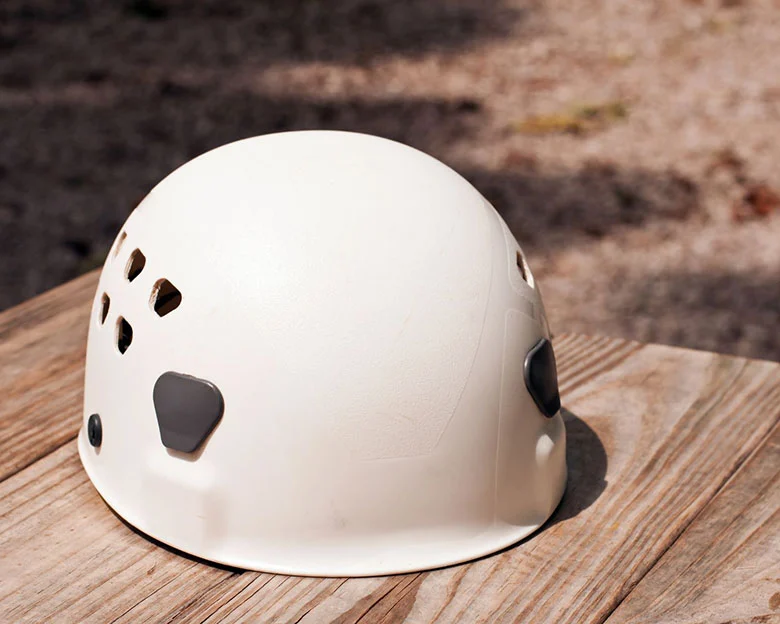
While bike helmets may provide some level of protection, they are not the ideal choice for rock climbing. Rock climbing helmets are specifically designed to withstand impact from falling rocks and other hazards unique to climbing.
It is important to prioritize safety and invest in a proper climbing helmet that meets industry standards to ensure maximum head protection during your climbing adventures. Remember, using the appropriate equipment can make all the difference in preventing serious injuries.
FAQs
1. Is it safe to use a bike helmet for rock climbing?
No, it is not safe to use a bike helmet for rock climbing. Bike helmets are specifically designed and tested to protect against impacts from cycling accidents, not the types of falls and impacts commonly experienced in rock climbing.
2. What type of helmet should I use for rock climbing?
For rock climbing, you should use a helmet specifically designed for the activity such as a climbing helmet. These helmets are built with features that provide protection from falling rocks and debris, as well as the potential impact from falls.
3. Why is using a proper helmet important in rock climbing?
Using a proper helmet in rock climbing is crucial because it helps protect your head from potential injury caused by falling rocks or other objects dislodged during climbs. It also provides padding and impact absorption in case of falls or collisions with surfaces.
4. Can I repurpose any other type of safety helmets for rock climbing?
It is strongly recommended not to repurpose any other type of safety helmets, including those used in sports like biking or skateboarding, for rock climbing. Each sport requires specific design features tailored to its unique risks and needs, so using the wrong type of helmet can compromise your safety on the cliffs or mountainsides.

